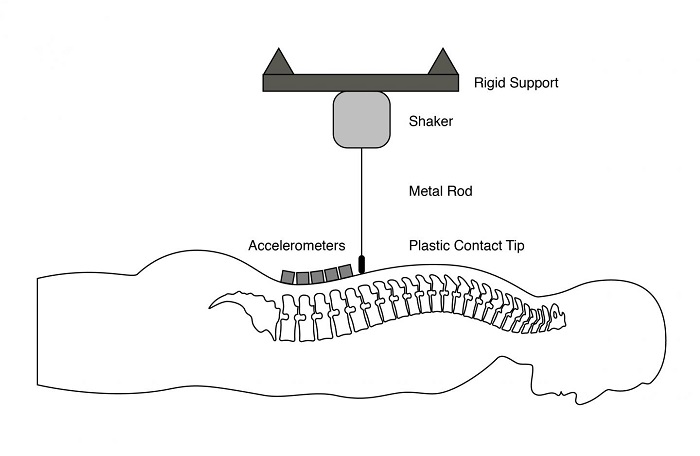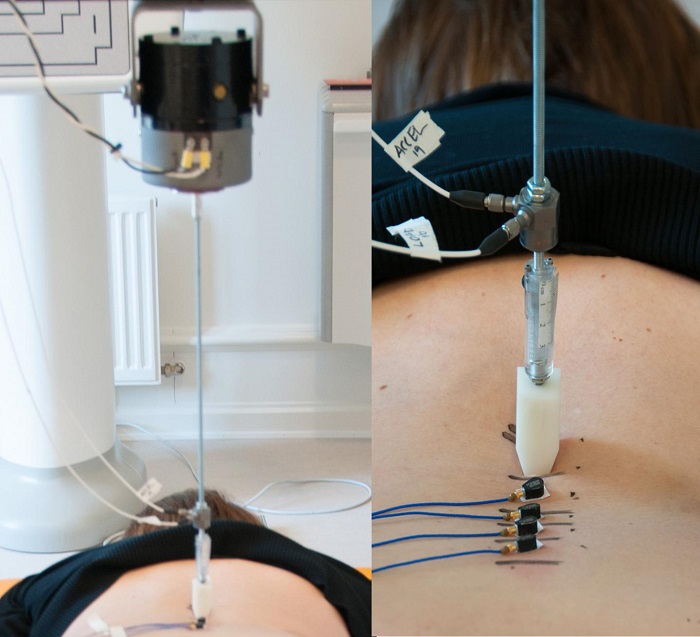A study out of the University of Alberta shows that vibrating the spine may reveal more about back problems than a magnetic resonance imaging (MRI) machine.


Working with the University of South Denmark, researchers were able to demonstrate that structural changes within the spine alter vibration responses significantly. They were able to prove this by testing the technology out on various sets of identical twins.
Being able to use identical twins is significant and unique for biomechanical studies. In this study specifically, if the identical twins had similar spines, vibration response were statistically similar. On the other hand, if one twin had a different spine, whether it be due to an accident or injury of some sort, the vibration responses were much different from one another.
“In Denmark we have the world's largest and most comprehensive twin registry and using this unique resource, we have been able to contribute to research that can potentially help to diagnose millions of back pain patients,” says Jan Hartvigsen, professor of clinical biomechanics and musculoskeletal research, University of South Denmark.
Greg Kawchuk, professor of physical therapy at the University of Alberta's Faculty of Rehabilitation Medicine, explains that the team’s findings show the viability of vibration as a diagnostic tool that could help improve MRI utilization.
“While an MRI shows us a picture of the spine, it doesn't show how the spine is working,” Kawchuk says. “It's like taking a picture of a car to see if the car is capable of starting. Vibration diagnostics shows us more than how the spine looks, it shows us how the spine is functioning.”
“One of the biggest problems in back pain today is over utilization of MRI scans in patients that do not need them. This is a waste of health care resources that leads to over treatment and even increased disability,” Hartvigsen adds. “By using a simple, safe and inexpensive technology like this, we can potentially decrease the use of these scans significantly.”
The study may also have long-term implications in that it could be used to provide new diagnoses not seen by current imaging tests.
“Back problems are a significant cause of disability world-wide. For 90% of these patients, current diagnostic methods are not able to identify their problems,” says Cameron Schuler, President and CEO, VibeDx, who co-founded the VibeDx Diagnostic Corp, a TEC Edmonton spinoff company that has licensed the technology developed by Kawchuk. “Our hope is VibeDx™ will help improve our ability to identify the cause of the patient's back problem, which will then assist clinicians in matching a patient to the best course of treatment for their specific situation.”
Via EurekAlert
Advertisement
Learn more about Electronic Products Magazine





